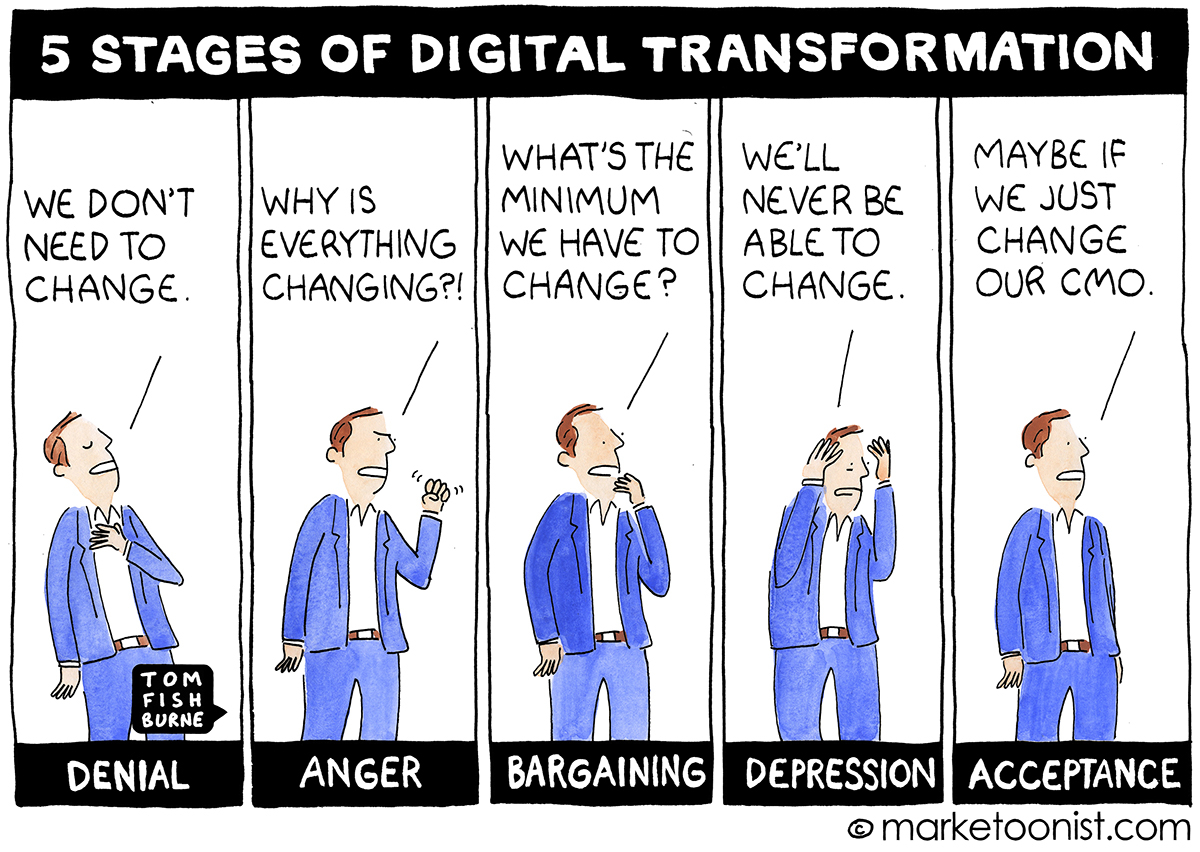Written by Lori Schmidt, AWE Bold Leadership Program Lead.
For some business owners, digital is about technology. For others, digital is a new way of engaging with customers. And for many entrepreneurs, it represents an entirely new way of doing business. None of these definitions is necessarily incorrect, but such diverse approaches often trip up leaders as they reflect a lack of alignment and common vision about where the business needs to go. This often results in piecemeal initiatives or misguided efforts that lead to missed opportunities, sluggish performance, or false starts.
As women entrepreneurs push forward with their digital agendas, it’s worth pausing to clarify vocabulary and sharpen language.
Digital transformation is the integration of digital technology into all areas of a business, fundamentally changing your culture, how you operate and most importantly how you deliver value to customers.
A definition from The Agile Elephant emphasizes all the ways businesses may need to adjust their existing practices: it reads - “[Digital transformation] involves a change in leadership, different thinking, the encouragement of innovation and new business models, incorporating digitization of assets and an increased use of technology to improve the experience of your organization's employees, customers, suppliers, partners and stakeholders.”
Digital transformation is also a cultural change that requires organizations to continually challenge the status quo, experiment, be agile and get comfortable with failure as you try things out. An important element of digital transformation is, of course, technology, but often it's more about shedding outdated processes and legacy systems than it is about adopting new technology. It’s also about meeting customer needs and providing value in brand new and rapid response ways. It’s important for a business to build out a full strategy to execute digital transformation. Studies show businesses of all sizes that implement a digital transformation strategy, grow their businesses significantly – usually by a minimum of 20% - and can out pace their competitors if done quickly.
“ Sometimes it takes a crisis to turn people’s mindsets around.”
COVID-19 is also setting the agenda and the priorities of where to focus digital transformation efforts, such as facilitating the needs of your new, remote workforce. But digital transformation stands for much more than suddenly working from home over Zoom, it’s about asking you and your business to rethink how you are delivering value to your customers in this digital world.
The key takeaway here is that business leaders must have a clear and common understanding of exactly what digital means to them and what it means for customers and how to convey that opportunity and vision to their people. It’s about transforming your entire business starting with defining your vision and then building out a digital strategy. But it is not an easy feat. It truly is a change process – a constant change process. And in all of this you, as a leader, need to be that CMO, Change Management Officer.
Entire companies are thinking about this same question. What is it that we need to do as leaders to steady the business and build through all this disruption?
Here are six quick tips to consider as you lead digital change:
Adopt a new kind of mindset. Remind yourself that change is good. Be ready for organizational shifts. Be ready to change tasks frequently and help your people be more comfortable with that too. Remember that uncertainty is here to stay.
Follow your industry. Be aware of what is happening in your industry. What are the drivers and what creates pressure for change? Those pressures will ultimately also create pressure for you and your business to change too.
Try to constantly learn new things. Take any opportunity to learn and gain new expertise. Read the publications in your professional area. Attend webinars and other learning activities on topics that you think might be relevant for your work now or in the future. (A quick note here – please follow reputable sources. Be careful what you read as it can also lead to stress and fear. There are, however, lots of positive, credible sources of ideas and support for the path forward.)
Network with your peers. Networking is the best place to get information that might not be publicly available. What are others seeing and experiencing? How are they handling it?
Be ready to support your organization. Culture change is something that cannot be forced; it requires the support of every member of the organization. New business models are not effective if no one is working according to them. New organizational structures do not work if members are fighting against them. You need to be able to support your team through all of these adjustments.
Help your team see and buy into the unifying purpose of your organization. When the disruption is constant, businesses need to transform continuously and fast. That is why it is important to help your people be prepared - with a new mindset, new skills and motivation around a renewed purpose.
The pandemic has accelerated the timeline for everyone, and businesses that once mapped their digital strategy in one to three-year phases now have to scale their initiatives in a matter of days or weeks. Having the knowledge of what digital transformation is and what it can do for your business is more important now than ever.
Alberta Women Entrepreneurs is hosting webinars on different digital transformation topics, click here to learn more.







